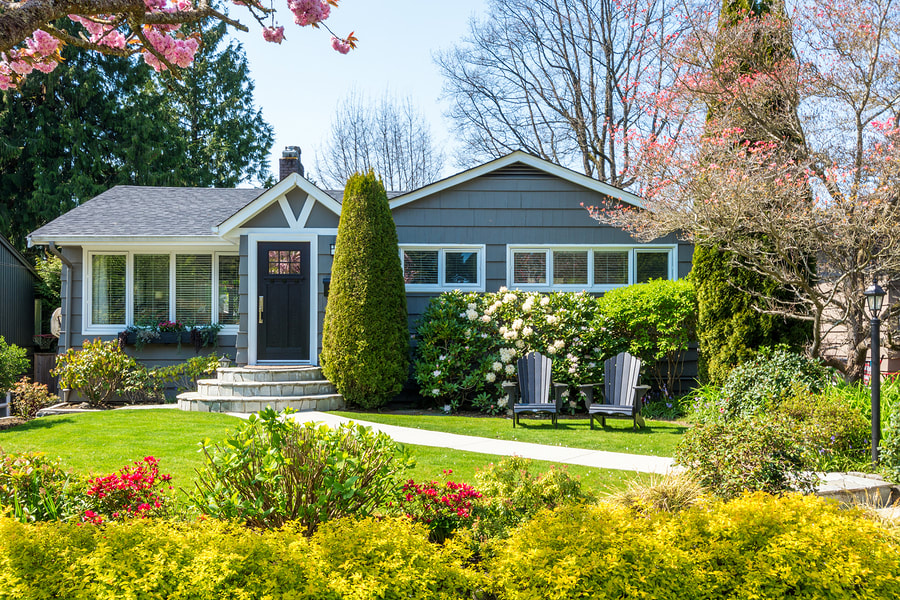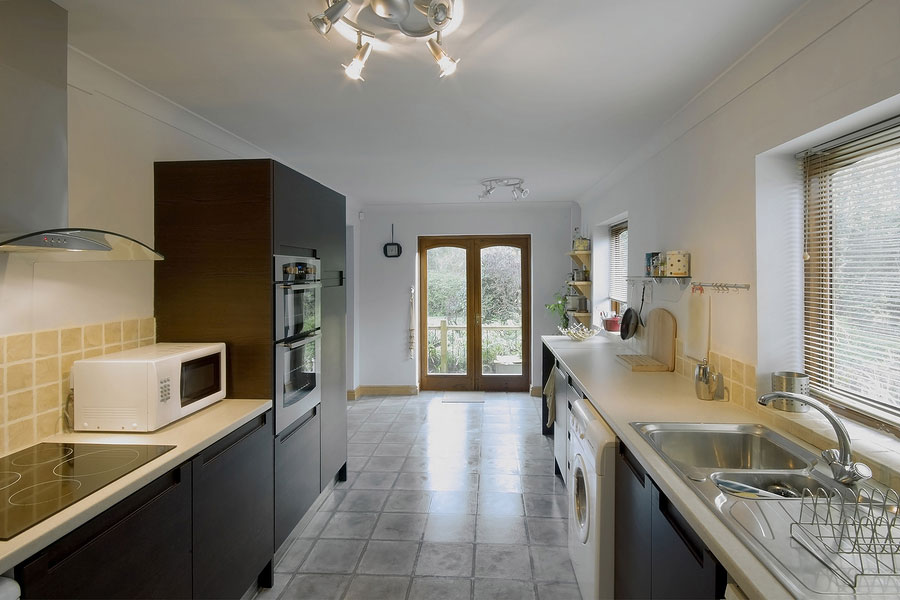|
Long recognized for exterior design of homes, stone has become a popular choice for interior design as well. It is durable and has a wide color and texture variation. Here are some ways to incorporate stone into your interior design or renovation!
0 Comments
When you finally find the home of your dreams, it can be easy to put blinders on and ignore warning signs that might be right in front of you. Those red flags may not be so clear for an undiscerning eye to detect!
Either way, there are a few common problems that should be enough to give pause to any prospective homebuyer. These are not necessarily deal breakers, but definitely things to keep in mind as you are weighing the pros and cons of a new home. DIY Gone Wrong In an effort to save money before putting their home on the market, some sellers take on do-it- yourself projects that don’t always end well. These projects can end up costing you a lot of time and effort to undo the substandard work and replace it with a better solution. These types of projects most commonly occur on outdoor decks and home additions. If anything looks questionable, make sure to ask about it during the home inspection and request copies of the permits used to complete the work. Mold or Water Damage This is another area that can end up costing a ton of money to repair if not noticed before a home is sold. Look for places on the walls or ceiling that look like they’ve recently been patched or replaced. Foggy windows are another telltale sign of moisture problems in a home. Check them for condensation and ask the seller or your home inspector about anything questionable that you see. Keeping Up with the Joneses Beyond the house itself, the state of a home’s neighborhood says a lot about whether it’s a place you want to live. Are the lawns well maintained? If there’s a holiday coming up, are the homes decorated to reflect it? These might seem like trivial things, but your dream home can turn into anything but that if your neighbors are not hospitable. Your home’s value can also decrease based on a lack of curb appeal in the neighborhood, especially in a weak housing market. A home equity loan can be a great way to pay for home repairs or other expenses utilizing the value that your home already has. However, it can do more harm than good if not used properly.
Here’s what you need to know before you sign on the dotted line: What is a home equity loan? A home equity loan, sometimes referred to as a second mortgage, is a loan that allows homeowners to borrow against the equity in their home. Like any other loan, the money is received in a lump sum and paid back over time with interest. These loans are commonly used for home renovations but can be used for anything from debt consolidation to paying for college. Your bank will determine how much you can borrow and what the term of the loan will be. Home equity loans typically take between 5 and 15 years for repayment, depending on how much you borrow and what you can afford to pay each month. Home equity loan vs. HELOC A home equity line of credit, also known as a HELOC, is another type of loan that utilizes your home’s existing value. Unlike a home equity loan that’s disbursed in one lump sum, a HELOC is available for withdrawal on an ongoing basis. Another way these loans differ is in the interest rates. A home equity loan has a fixed interest rate for the duration of the loan, while a HELOC has a variable interest rate. Given this information, which loan should you choose? Home equity loans are most commonly used for larger, one-time expenses, while HELOCs are used for smaller, ongoing expenses. Red flags to avoid As with taking on any type of debt, you want to make sure that you have a good reason for taking out a home equity loan or HELOC before making a final decision. It might be tempting to use the money to buy something new or go on a dream vacation, but don’t borrow more than you can realistically afford to pay back. You’ll also want to carefully evaluate your home’s value and its projections over the life of your loan. If you plan to sell your home while the loan is active, you’ll need to make enough money to cover your original mortgage plus the home equity loan or HELOC. It’s summer, and it’s time to hit the road for vacation. Your trip is booked and your bags are packed, but what about your home?
There are a few things you can do before you leave for vacation to ensure that your home is safe and sound when you return. After all, home is the last thing you should have to worry about when you are away. Check Expiration Dates The last thing you want is to come home to a smelly house caused by food that’s gone bad while you were away. The day before you leave, go through the refrigerator and remove anything that’s likely to go bad while you’re away. The same thing goes for fruit or other items that are stored at room temperature. Rather than throwing the food away, try to freeze as many items as possible, or give it away to friends and neighbors. A clean pantry and fridge will also keep bugs and other pests from getting in. Set Timers These days, just about everything in your home can be placed on a timer. You can program your lights and thermostat to turn off and on at certain times to ensure that your house does not get too hot or cold — and that it does not look completely dark and deserted. You can also keep an eye on many of these same things through remote monitoring apps like the Nest thermostat and August Home Security. The decision about whether to utilize these tools depends on how connected you want to be to your home while you are on vacation. Disconnect and Unplug No matter whether you use monitoring apps, there are a few things that should be completely turned off during vacation. Turn off the main water line so that you do not come home to a flooded basement if something happens that you can’t see. Turning off the water is not recommended in the winter when pipe freezes are more likely, but is not a problem during the warmer summer months. In addition, unplug any major appliances and electronics. Not only will this reduce the electricity used, but it will also decrease the risk of electrical fires that can damage your home. A wooden deck adds living space and value to your home. It is a great place for relaxing, entertaining, and outdoor dining.
If this is your first deck or patio project, keep it simple. Later, when you have gained expertise you can enhance your deck by extending its length and/or width, adding multi levels, steps and other features. There are several wooden patio plans available on line or at building supply stores like Home Depot and Lowe’s. Staff will help you calculate the wood and hardware you need as well as offering advice about choosing materials and building tools for this DIY project. Don’t forget to use safety equipment including a hard hat, steel-toed work boots, safety glasses, work gloves, and ear protectors. When choosing the wood for your deck or patio, look at options that were not available a decade ago. There are several manufactured materials and exotic woods now on the market in a wide price range. Consider the appearance, maintenance required for upkeep and the kind of weather your deck will experience. If this is a first project, consider how costly the materials are and how tricky installation is going to be. Get yourself a good set of plans and follow them faithfully. When you are more experienced at building a wooden patio, you can add your own enhancements. Your first challenge is installing posts to anchor the deck. Follow building instructions for how to use batter boards and masonry string lines to lay the footings. Use a posthole digger to dig holes at least a foot deep. Use tube forms so footings are level and an inch above the ground. This job will take a DIYer the better part of a day. Of course, the job will go faster and be more fun with a crew of DIYers. The next step is to cement those posts in place. Don’t forget to leave tops of the posts open for adding the structure. Use ready-mix concrete. Place anchor bolts in the centre of each post before cement hardens and align those anchors with a board, making sure of diagonal measurements so the anchor positions are square. Allow at least four hours for cement work. Next, you need to attach the beams to the post anchors. Doubled 2 x 6’s make the best beams. When you are attaching them to the post, anchors insert a half-inch shim between the beams at each footing. This job will take two or three hours. Make sure beams are aligned before taking the next step. Follow deck instructions for adding rim joists and angle brackets. Attach inner joists to beam faces next. Make sure nails are hammered straight and they are flush with the boards. Fasten decking. Make sure boards are aligned. Fasten twice in the centre of each joist and about an inch from the edge of each board. Trim deck boards so edges are even. Add a prefabricated railing or create one of your own. |
More articles:
August 2018
Categories |
|
Contact Kirsten to get started today.
(310) 756-3524 [email protected] #DRE 01450452 Ask her about her newsletter to get current South Bay Market information and real estate news right to your inbox... no spammy ones, promise! |
|
Copyright © 2021 Kirsten Cole. All rights reserved.







 RSS Feed
RSS Feed
